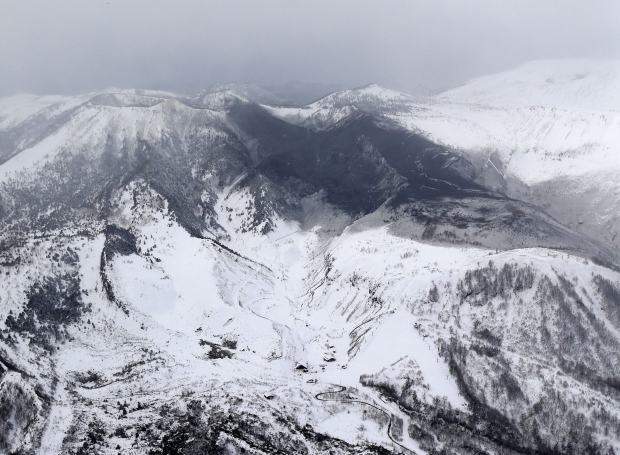By David Jacobson, Temblor

Today, a volcano approximately 150 km (93 miles) northwest of Tokyo erupted, leaving one dead and injuring at least 12. The volcano, Mt. Kusatsu-Shiranesan, is located near a popular ski resort, and the people injured were skiing on the slopes and hit by flying rocks. The one fatality was a soldier in a group of 30 that were undergoing ski training. As reported by the BBC, at least 76 people are seeking shelter in a mountaintop rest home. In addition to this eruption, an avalanche, believed to have been caused by the eruption, was triggered.
The video above shows the time the eruption occurred. Towards the end of the video, you will see black ash on the right hand side and small volcanic bombs (rocks) fly across the screen
This eruption at Mt. Kusatsu-Shiranesan came without warning, which is why dozens of people were within a km of the erupting vent. So, far, volcanic debris have not been found more than about a km away. Because, of this, the impact of the eruption is primarily on the ski resort and not on the town of Kusatsu, 5 km (3 mi) away. As a result of this eruption, the Japan Meteorological Agency has advised people to stay away from the volcano, and many people have already been evacuated.

While this eruption was relatively small, it appears to be typical of eruptions in the last 80 years at Mt. Kusatsu-Shiranesan. Most recently, the volcano erupted in 1983 in what could be described as a mildly explosive event. Additionally, because there is a crater lake at the summit, many past eruptions have been phreatic in nature. Phreatic eruptions are steam-driven and are caused when water is heated extremely rapidly, which can cause it to flash to steam, which can generate small explosions. It is unclear if this was the cause of today’s event. Should any new information come in, we will update this post.
References
Smithsonian Institute, National Museum of Natural History, Global Volcanism Program
BBC
Time
Japan Meteorological Agency (JMA)
- Beware quiet segments of the Philippine Fault - May 16, 2025
-
ډیری عوامل افغاني ټولنې د زلزلې پر وړاندې زیانمنوي
- August 11, 2022 - What’s happening this week in Humboldt County, California: The squeeze - February 6, 2019
